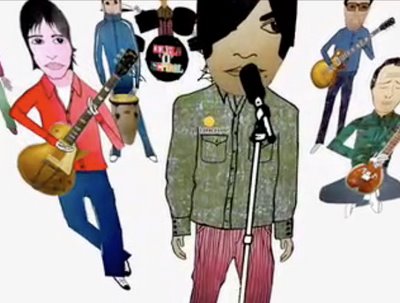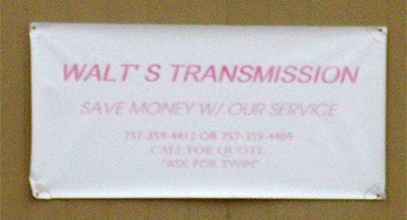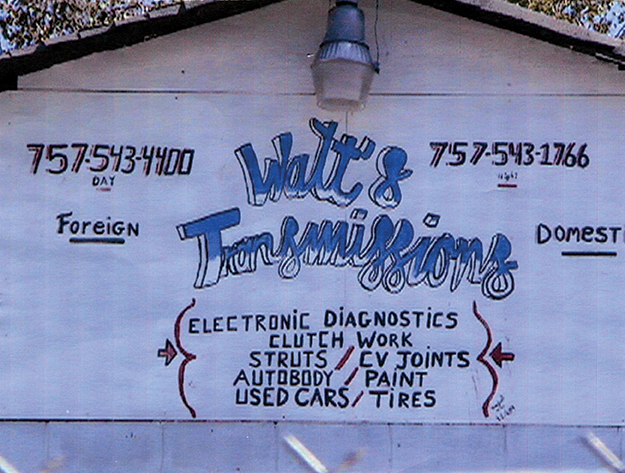
Cornershop wants to be all things to all people. More precisely—all music to all people. The band is engaged in an ongoing project of musical inclusion and exploration, one that challenges listeners and art form itself.
Its career is defined by defiantly unconventional moves. Cornershop quietly—in that they receive nowhere the amount of press and radio exposure as lesser nonpareils—manages to be truly peerless in their sound and approach to music making. Its records abound in adventure and invention, and the only certainty for the group’s future is that something distinctly new is on the way.
The challenges Cornershop presents to popular music—its audience and
the industry—are as audacious as those they assume for themselves. Foremost is a determination stated by Tjinder Singh, “The only thing that all our records have in common is that each one tries to sound utterly different.”
Cornershop releases are cause for celebration for fans, first because of their infrequency: six records in 20-ish years, seven if you count the 2000 “Clinton” side project Disco and the Halfway to Discontent, plus an assortment of EPs, singles, and remixes. Conveniently, the music contained on each album is an ideal soundtrack for festivity, no matter your mood or melodic persuasion. And Cornershop is the quintessential celebration of popular music through both space and time. Its albums sound like nothing else out there—because like no one else, Cornershop sounds like everything else out there.
Its roots are in the band The General Havoc, formed in 1987 by Tjinder Singh, Avtar Singh, David Chambers, Ben Ayres, and Neil Milner. In addition to some of its members, what survives (and thrives) to the present day is a proclivity for sly word play and pointed social commentary. The group’s name gestures to the Preston pub “General Havelock”—which in turn was named after Major-General Sir Henry Havelock, notable for his role suppressing the Indian Rebellion of 1857.
The General Havoc disbanded in 1990 after releasing a lone, private pressing of the EP Fast Jaspal on their Chapati Heat label. In short order, Tjinder Singh (songwriter, lead vocals, guitar), Avtar Singh (bass, vocals), David Chambers (drums), Ben Ayres (guitar, keyboards), reunited the next year in Leicester to form Cornershop.
This newly adopted band name also carried a political meaning, referring to minority and ethnic Indian experience in the U.K. It’s a slang term for neighborhood shops, its use confronting the stereotype of their British Asian ownership. Like gays adopting the pink triangle as symbol, dubbing itself Cornershop embraces the label to draw attention to and transform perception. It was also a plangent announcement in word of a provocative agenda.
That plan got its first boost after a September 1992 gig at Harlow Square, their first show south of Watford Gap services, with the band’s signing by Gary Walker to independent label Wiiija Records. Off stage, Cornershop declares its principles with a controversial Melody Maker image of the group burning a photograph of Morrissey in front of the EMI Records offices. The singer was the target of the band’s scorn for his unexplained use of racist/nationalistic imagery. Though derided by some as a publicity stunt, the action remains consistent with Cornershop’s continued commitment to progressive ideals.
In its moniker and music, Cornershop embarked on an ambitious program of reclamation, reimagining popular music and cultural identity. In keeping with the alternative music times—and their youthful energy—Cornershop’s sound was a raucous guitar-based agit-pop. However, amidst the thrilling din were tracks accompanied by sitar and dholki, and sung in Punjab.
1993 saw the band’s initial EP releases on Wiiija, In the Days of Ford Cortina (on curry coloured vinyl no less) and Lock Stock and Double Barrel. In February of that year, they performed their first radio session ever—for John Peel. The invitation came after the famed BBC DJ attended a Camden Falcon gig alongside writers Jon Savage, Hanif Kureishi, and John Robb, plus John Peel’s son DJ Tom Ravenscroft. Peel would remain an ardent supporter of Cornershop over the years, and the other attendees were testament to the band’s bona fides as a musical Event. Cornershop wrapped the year with the Elvis Sex-Change compilation of the two EPs, and an appearance at the Hammersmith Apollo opening for Boy George.
The band’s debut LP, Hold On It Hurts, was released in 1994, finding U.S. distribution on noted indie label Merge Records (later home of Arcade Fire). The record extended the primarily guitar-based post-punk approach in company with the multicultural mix. Though still rough and direct, tracks displayed textures exhibiting a broader musical vocabulary and intent. On extended numbers like “You Always Said My Language Would Get Me into Trouble,” it reclaimed the Indian-inspired drones of the Velvet Underground, asserted their origins, and then refreshed them for a new age.
The album’s single “Born Disco; Died Heavy Metal” cued up the group’s unique brand of personal musicology with a hooky tune set to a driving beat— complete with a mid-song guitar freakout that flaunts audible “I Heard Her Call My Name” quotation marks. Hold On It Hurts established the Cornershop anti-template with tracks like the traditionally Indian-instrumented Punjabi-sung “Counteraction,” followed by the east/west blend of “Where d’U Get Your Information,” then the spoken word + music assembly of “Tera Mera Pyar.”
Lyrically, the songs were provocations and portraits delving into public and interpersonal politics. “Change” demanded the action (“for change’s sake.”) Future albums will display political conviction, however, the occasional stridency on early display would be replaced by more nuanced and allusive expressions.
Amongst admirers of Hold On It Hurts were David Byrne and Yale Evelev, founders of the geographically and stylistically wide-ranging label Luaka Bop. They signed Cornershop in the U.S., with Byrne proclaiming, “We could see that they were headed in a direction that no one else dared travel. And we liked it.” Byrne’s own assorted musical explorations made him particular receptive to Cornershop’s adventuring. In many ways, the band has brought to fruition and advanced many of Byrne’s own intentions.
Though the band was embarking in dramatic musical directions under its own name, Cornershop still saw fit to spin off another group and label. Clinton released Jam Jar on the Wiiija-distributed Meccico in 1995. “Clinton used more technology,” explained Tjinder Singh, “was more home based and that’s what we wanted.” Meanwhile, work also continued on the second Cornershop album, previewed on the U.K. and U.S. club success “6 A.M. Jullandar Shere.”
The track, with its companion “7:20 A.M. Jullandar Shere,” brackets the resulting LP Woman’s Gotta Have It, one of the most startling and venturesome sophomore albums ever released. The record is an audacious inversion of the content of Hold On It Hurts. The Asian/western mix and sonic experiments accenting the preceding record have bloomed and pushed to center stage. The “Jullandar Shere” duo (recorded in a Holloway bedsit) is the showcase of Cornershop’s expanding sound with its scratchily hypnotic guitar rhythm, distorted Punjab vocal, and percussion. Low-fi indie rock hold its own on “Hong Kong Book of Kung Fu,” “Call All Destroyer,” and the eight-minute bass guitar workout “Looking for a Way In.” However, the lyrics are elliptical and suggestive rather than proclaiming.
Alongside are curious turns with little or no precedence for the band—except in their innovation. “Wog” (also released as a single) is set to some folksy fingered acoustic guitars. “My Dancing Days Are Done” confounds all expectations with a vocal duet sung in French over traditional Indian percussion.
Where Hold On It Hurts maintained a performed live feel throughout, Woman’s Gotta Have It raises its “fi” by fully embracing the sound manipulation potential of the studio. Though still immediate, Tjinder Singh’s production showed an easy mastery of the tech and, specifically (and most importantly for what was to come), sampling technology. As a unit, the band saw original drummer David Chambers replaced by Nick Simms and the addition of percussionist Pete Hall.
Cornershop’s efforts continued to gain attention amongst critics and other musicians, outstripping their sales. David Byrne co-conspirator and fellow multicultural music maven Brian Eno expressed admiration for “Jullandar Shere.” (As did former Clash frontman Joe Strummer, when he repeatedly featured it on his BBC World Service show “London Calling” years later.) American bands Beastie Boys and Sonic Youth professed support, cementing the New York music intelligentsia vote. Robert Christgau, self-proclaimed “Dean of American Rock Critics,” pronounced “Jullandar Shere” “casually irresistible” and awarded its album a grade of “A-”—the lowest rating he’d ever give a Cornershop side. It was possession of Cornershop that was thought to fuel Beggars Banquet’s purchase of Wiiija Records during this period.
Cornershop spent 1996 touring and starting work on their next album. On the road in the U.S., they headlined a show at the Brooklyn Academy of Music, were on the roster of Lollapalooza, and travelled extensively across the country and Europe supporting acts such as Stereolab, Beck, and Oasis.
Amidst the touring, the band made numerous visits to New York and India for recording. In a typically inspired—and cheeky—move, famed poet Allen Ginsberg was contacted after finding his number in the NYC phone book. He was recorded in his kitchen reciting his poem “When the Light Appears Boy” to a harmonium accompaniment. On the subsequent album, it was layered over a street music sample taken from the streets of Punjab.
Ginsberg was one of a number of renown, unknown, and up-and-coming artists involved in the shaping of Cornershop’s next album. Dan the Automator contributed to several tracks, including “Candyman” which featured Justin Warfield who was recording in the same studio. And Yoko Ono and Paul McCartney lent permission and support to their Punjabi-sung reimagining the Beatles’ classic “Norwegian Wood.” During this time, the band underwent further personnel changes, becoming a five-piece of Tjinder Singh (vocals, guitar, dholki, scratches); Ben Ayres (guitar, tamboura, keyboards); Anthony Saffery (sitar, harmonium, keyboards); Nick Simms (drums); and Peter Bengry (percussion).
When I Was Born for the 7th Time was released in September 1997, initiating unprecedented acclaim and attention for the band. Woman’s Gotta Have It could be simplistically (and often was) compressed into a “Hindi-pop” label; When I Was Born for the 7th Time emphatically defied any such tagging and all boundaries. The record is a landmark of sonic invention and adventure, through the astonishing assortment of musics incorporated into its mix, to stretching the definitions of what constitutes a “song.” Tracks that on first listening seem throwaway trifles or a clashing blend of elements become revelations of insistent, compelling pan-cultural grooves. Perhaps the album’s greatest achievement was effortlessly making its music seem natural, what music was supposed to be—and was.
Burnishing the album is “Brimful of Asha,” a genuine classic hit single. Powerful enough in its own, original right (reaching number 1 in the 1997 John Peel Show Festive Fifty), it additionally received a Norman “Fatboy Slim” Cook remix that took it to #1 status in the U.K. in February ’98 and #16 in the U.S. On its face, the song is a paean to famed movie playback singer Asha Bhosle. But the track is foremost a celebration of vinyl culture—name-checking Trojan Records, Marc (T. Rex) Bolan, Mohammad Rafi, Jacques Dutronc. Along the way, the song also touches more broadly on Indian culture, emigrant experience, politics, nostalgia, and hope. All this while possessing the most unlikely—yet inclusive—refrain in pop music history: “Everyone needs a bosom for a pillow.”
Cornershop fully coming into its own coincided with a vital cultural moment, leading to numerous accolades. When I Was Born for the 7th Time was included in Rolling Stone’s “Essential Recordings of the 90’s,” and Spin ranked it #34 in their “90 Greatest Albums of the ‘90s”—after making it #1 of their “Top 20 Albums Of The Year” (besting, amongst other notables, Radiohead’s OK Computer). Similar rankings were awarded by Q magazine, NME, Melody Maker, and the Village Voice, amongst others.
The band set off on another round of extensive touring in 1998, now as headliners in the U.K., Europe, and Japan. Cornershop’s recorded response to the acclaim was wholly in character—and a baffling career move to mainstream observers. Rather than building the Cornershop identity, the “Clinton” avatar was resumed for the 1999 release of the album Disco and the Halfway to Discontent. The move was as characteristic as it was unpredictable and contrary to accepted professional wisdom. While gratifying, the success of When I Was Born for the 7th Time seemed irrelevant to where Singh and Ayres (now the core of the group and remaining original members) wanted to go.
Their destination was the dance floor. The Clinton LP was a laid back but insistent collection of fizzy grooves that featured the band’s hallmark guest vocals, stylistic twists, and genre fusions. Putting aside the Cornershop name rightly signalled that, in comparison, the record offered less of the complexity and intensity of those records. Disco and the Halfway to Discontent is a thoughtful and lively divertissement between main acts that, just like “real” Cornershop albums, reveals more pleasures with repeat listens. It was also a stage setting for the full Cornershop album to follow.
Disco and the Halfway to Discontent provided further proof (if needed) that Singh’s sonic imagination seemed limitless. This status was especially evident when Cornershop quadruple-downed on their follow-up to When I Was Born for the 7th Time, and masterpiece to date—2002’s Handcream for a Generation.
On the surface, the record follows its predecessor’s path: some band-performances, scratch and sample collages, genre exercises, and cross cultural fusions traversing reggae, funk, and soul. The rowdy guitar work that absented itself from When I Was Born returns but now in ‘70s glam rock guise. Tracks are longer and incorporate the instrumental experiments.
The dance themes of Disco and the Halfway to Discontent play out on Handcream. “People Power” tarts up Disco’s opening track and propels it with a funky surf rhythm guitar. The recitation of “Electric Ice Cream” deepens into “Wogs Will Walk” (while the phrase “German Elastic” crosses over from “The Hot for May Sound” to “Wogs.”)
Handcream for a Generation functions like an anti- or sideways concept album, a standing suggested by the framing “Heavy Soup” tracks that open and close the album. Soul legend Otis Clay performs as MC, introducing the group and announcing numbers to be performed (some actually on the record, others not) over a soulfully vamping band.
If there’s a central theme it’s commentary on music and its attendant industry. Singh gives scathing voice to the corporate downside of popular music success, which is no less biting for being occasionally set in his oblique lyrics. The blunt statement “I understand guns in the A&R office” drops in successive tracks “Lessons Learned from Rocky I to Rocky III” and “Wogs Will Walk,” while “Motion the 11” pops up throughout.
Additionally, a mysterious numerology weaves through the cuts, either literally in the song titles (“Music Plus 1,” “Lessons Learned from Rocky I to Rocky III,” “Motion the 11”) or amongst the lyrics.
Handcream achieves its singular status through its ambition and the totality of its expression of the band’s aesthetic. The band was at its most expansive in terms of the genres it grasped, and the collaborations the record included. Along with Otis Clay, Handcream featured London reggae figures Jack Wilson and Kojak on “Motion the 11,” Noel Gallagher contributed guitar to “Spectral Mornings” and former Oasis bass player Guigsy played bass on “Lessons Learned from Rocky I to Rocky III.”
“Featuring” is a standard hip-hop credit line as performers bolster one another’s image. With Cornershop, frequent guesting establishes them as more a community than “group,” not so much a band making music than an idea of music making. Collaboration is a vital, ongoing aspect.
Cornershop followed up the album with the requisite concert tour, again with Oasis (with Noel Gallagher filling in on bass for the band), playing Coachella and various festivals both in the U.K. and U.S. On the tour’s conclusion in 2003, Tjinder Singh starts a leave of absence from Cornershop and begins work on a film about the independent music industry.
However, his absence from music is short lived. In a “creative splurge,” Cornershop releases a double A side single, “Topknot”/”Natch” on Rough Trade in 2004. This is the band’s initial collaboration with the pseudonymous “Bubbley Kaur.” Where Handcream was expansive and complex, the single tracks are stunningly intimate and direct, seamlessly fusing Kaur’s haunting Punjabi vocals with funk-inspired rhythms. “Topknot” glides on a gently quavering electric guitar figure, while after a martial percussion introduction, “Natch” lopes to a bobbing bass line.
In addition to attracting critical attention, “Topknot” inspires musical response. In his “Caveman” guise, Pulp bassist Steve Mackey remixed “Topknot” with a guest rap by M.I.A., with who he was working at the time. “The whole process was very natural and born out of a genuine love of the original track,” said Singh, “which we found very encouraging —no rupees exchanged hands.” Through another “accidental” collaboration, Prashant Bargava, using footage from his film Patang, set amidst and Indian kite festival in Ahmedabad, directs a video for “Topknot”.
By 2005, Cornershop is engaged in the crafting of two separate future releases. Episodically over the next five years, work continues on a full album release with Bubbley Kaur, and a “pure” Cornershop product, free from collaborations. Along the way, another “featuring” single—this time with with ex-Happy Mondays backing singer Rowetta—“Wop the Groove,” is released in 2006.
Alongside recording—facilitated by Singh’s construction of a studio in London—Cornershop makes occasional concert appearances, previewing their new line up. One is at the Jarvis Cocker curated Meltdown festival, and another on The Culture Show, performing a relaxed but assured cover of the Kinks’ classic “Waterloo Sunset.” Also in preparation, Singh and Ayres set up their own label, Ample Play, and research distribution channels for future releases.
Another collaborative single, “Something Makes You Feel Like” with French singer Soko appears in 2008. The track places her charmingly halting double-tracked vocal over a simple and steady guitar/bass/drum pulse, once again a la the Velvet Underground. Before the year’s out, Cornershop gains some more global ear share, with a global Nike ad featuring “Candyman” from When I Was Born for the 7th Time.
The long hiatus between albums ends in 2009, with the release of Judy Sucks a Lemon for Breakfast. After the previous trio of assertively far-reaching and challenging records, its relative straight-forwardness makes it startling in its own right. Cornershop are here to rock—symbolized by the rousing Stones/Dolls-flavored opener, “Who Fingered Rock n Roll?”—in their own unique way.
Save for the short sound collages “Half Brick” and “Shut Southall Down,” every track is band-played and potentially replicable in concert. In terms of pop traditionalism, the album even possesses an aspect never before witnessed with the group: a title track. In its most direct and appealing album, Cornershop stays true to defying expectations and making the move appear radical.
If traditional chorus-verse songs with great riffs and hooky melodies are the intent, Judy provides them on every track. After “Brimful of Asha,” there should be no doubt Singh ability to pen abiding tunes. Judy proves he can deliver an album’s worth.
Where previous Cornershop albums demonstrated the group’s command of space—musical styles from across the spectrum—Judy proved their firm grasp on time. The shorthand description is that the album exhibits a “retro” feel, working classic rock, soul, and gospel moves across the tracks. Once again, the weave of inspirations and innovations is effortless, devoid of pastiche or pandering.
Alongside Singh’s production and arranging skills, credit lies to the musicians assembled for the latest incarnation of Cornershop. Where the early Cornershop were cited for “aggressive incompetence,” the band is here adept and assured. The group is a standard guitar/bass/drums/keyboards unit augmented with sitar. Accenting the arrangements are the usual analog synths, tambouras and harmoniums, plus guesting strings, brass, clarinet, trombone, and sundries.
The expanded group is equally at home with the Punjab folk psychedelia of “Free Love” as the 16-minute soul/gospel revel “The Turned on Truth (The Truth Is Turned On)” that closes the album. Rock/pop is the prevalent mode (“Soul School,” “The Roll Off Characteristics (of History in the Making),” a more Manfred Mann than Dylan cover of “The Mighty Quinn,” the title track) with excursions such as the reggae tones of the ecology fable “Operation Push,” which abruptly halts mid-song for what seems like a cosmic-Punjabi public service announcement.
The major collaborative aspect of the album is in videos for four songs. Cornershop works with Passion Pictures (‘Free Love’), Rude animation (‘Soul School’ video), Prashant (‘Roll Off Characteristics’) and Esteban Gittins (‘Who Fingered Rock n Roll’).
Cornershop’s U.S. audience has to wait nearly a year after Judy’s U.K. release but is treated to U.S. only releases of country-and-Western covers ‘Houston Hash’ and ‘The Battle of New Orleans.’ Work continues on the interrupted full album collaboration with Bubbley Kaur (“Tjinder would be working like a mad professor in his studio on the tracks when I’d turn up,” says Ben Ayres, “it was pretty intense.”) To inspire and encourage fans to be part of finishing the record, Cornershop join the Pledge campaign in late 2010, an artist-led innovative funding initiative for musicians. Contributors can donate to make advance orders to receive—amongst other treats—a guitar personally smashed by Tjinder Singh.
To herald the new album, Cornershop re-release “Topknot” in January 2011, followed by the first offering of ‘United Provinces of India’ as a free download by Spin magazine. Cornershop and The Double ‘O’ Groove Of featuring Bubbley Kaur is eventually released in mid-March.
At the heart of Double ‘O’ is Tjinder Singh’s desire to “mix western music with Punjabi folk in a way that wasn’t crude.” “Western music” encompasses a multiplicity of stances and Singh doesn’t skimp, offering ten stylistically dissimilar tracks, unified in accomplishment. The album is a studio-creation, with instrumentation credited to Singh and Ayres, plus “Preston’s Lancashire Be Rockin’”
“For me, Punjabi folk music is a lot like hip-hop,” says Singh about the record, “It’s simple, it’s parochial, it sends out a message. It’s sometimes a bit rude and earthy, it’s often done in duets, it’s got a very big beat behind it, and it represents what’s going on, in a neighbourhood or a village. And it can be taught from village to village. Even the distribution of it is traditionally the same – people pass around cassettes.”
This succinctly summarizes the textures of Double ‘O’. The traditional Indian rhythm that kicks off the brassy opener “United Provinces of India,” quickly meshes with funky guitar and scratchy breaks.
As with all Cornershop albums, you never know what’s coming up next—and how Singh and company will make it work. There’s the stately harpsichord that punctuates the soul saunter of “Double Decker Eyelids;” the rollicking piano-driven, clattering timber percussion of “The Biro Pen;” “The 911 Curry” staccato brass blasts handing off to analog synth etudes; the sci-fi twiddling synths that open the hyperactive sax bounce “Supercomputed;” the regal trumpet samples framing the leisurely march of “Once There Was a Wintertime;” the folksy acoustic guitar picking pop of the joyous closer “Don’t Shake It.” Oh yeah, there’s even a sitar snippet chiming through “Double Digit.”
The binding force of the set is the varied beats and drum cadences that serve as propulsion, bridge, and soloist. Locked in rhythm are similarly jazzy and melodic basslines. But the essential presence in the Double ‘O’ fusion excursion is Bubbley Kaur — Beatrice to Singh’s Dante.
In its aural flavorings, the album acts as intersection and realization of intent of two landmark records, 1968’s The Beatles and the 1981 Brian Eno/David Byrne collaboration My Life in the Bush of Ghosts. The “White Album” is the determinative manifold album, where The Beatles indulged every production and stylistic whim in one sprawling 2-LP set. Double ‘O’ offers the same capricious transitions and escapades. Bush of Ghosts layered appropriated vocals over composed rhythm tracks. Similarly, Singh has disconnected the lyrical “meaning” of Bubbley Kaur’s songs from their musical accompaniment.
“Occasionally we chose accompaniments that fitted the melodies, but usually we did the complete opposite,” Singh says. “We’d choose backings that seemed entirely inappropriate and see how far we could take them. You end up with a bicycle with square wheels, but as long as it just about goes, we’d stick with it.”
After the long hiatus between Handcream and Judy, the band seems re-energized and committed to a regular schedule of audio and visual production. Double ‘O’ sparks more video collaborations with Justin Rhodes (“Supercomputed”), Chris Hemming (“United Provinces of India”) and Phil Miller (“Once There was a Wintertime”).
The recent post-Double ‘O’ step was the May 2011 launch of Ample Play’s “The Singhles Club,” a six-tracks-for-6 subscription service. The project offers limited edition outtakes “reimagining the collectable single in a digital format with special added content, a digital popadom.” It’s a novel approach that addresses the Brave New Field of music distribution.
Cornershop matter-of-factly demonstrates the unities and common causes in music. They expose the rhythmic and melodic roots and graft new branches. All actions that unify are welcome, especially if we can dance to them. For all of its efforts, Cornershop has dutifully received credit for clearing a path for acts like M.I.A. and Vampire Weekend that proudly engage the music of a plural planet. However, more than bringing acceptance to eclectic styles that traverse nations, Cornershop does the greater service of demolishing the brittle, patronizing labels attached to non-Western performance. In a relentlessly cited era of globalization, Cornershop stands as a healthy example of pandemic perspective and possibilities.
Note: This article was commissioned by Cornershop for their promotional use. Thanks to Ben Ayres, Tjinder Singh, Marie Remy, and Arainu Sunar for their patience and help.





